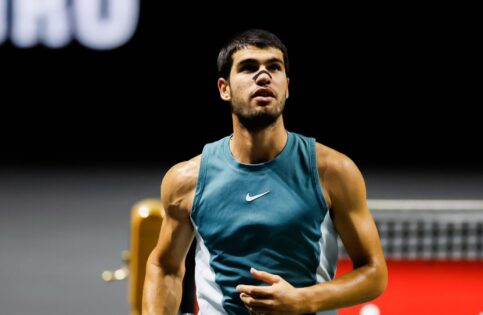Did Paris 2024 just become the turning point? For the first time, the Olympic spotlight felt fully shared. What was that? Men and Women competed in equal numbers. The Women made most of it, and just speaking of the numbers, US Women won a staggering 67 medals. Just imagine: If they had been a country, they would have been third on the medal tally. Katie Ledecky made it nine Olympic golds. Simone Biles came back swinging, led the team to gold, and stood tall again in the all-around, this time alongside Suni Lee. The women’s gymnastics team delivered. Rebeca Andrade’s floor gold? Even Biles and Chiles applauded it on the podium. This wasn’t just about records, it was about moments. Paris was a shift. And what’s coming at the next Olympics?
Let’s say women will be right at the heart of it. For the first time in Olympic history, women will have more quota spots than men at the Games. The Los Angeles 2028 Olympics will allocate 5,333 core spots to female athletes and 5,167 to male athletes. So what changes are we expecting at the Los Angeles 2028 Olympics? With the IOC’s latest program confirmation, the focus now shifts from equality to structure, how events are distributed, what sports are debuting, and how the Games are evolving. In football, there’s a reversal in format. For the first time at the Olympics, there will be 16 women’s teams and 12 men’s teams, a change from the standard setup seen since Beijing 2008. In water polo, too, the number of women’s teams will increase to 12, matching the men’s field.
Boxing will see a revised structure as well. Each gender will now have seven weight categories, bringing event numbers into alignment. What about new sports? LA 2028 is bringing in cricket, flag football, lacrosse, baseball/softball, and squash. These five sports will add 698 more athlete spots, 322 for women and 376 for men. When you put it all together, the total number of athletes is set to be 11,198, with women slightly gain: 5,655 to 5,543
Athletics will introduce a new 4x100m mixed relay to accompany the 4x400m mixed event. Artistic gymnastics, archery, table tennis, and coastal rowing will include new mixed-team formats. In swimming, 50m sprint races will be added across butterfly, backstroke, and breaststroke for both men and women. This marks the first time these strokes will be contested over the shortest Olympic distance, creating new medal opportunities for specialists.
For the first time in Olympic history. pic.twitter.com/oXgT1QP7JI
— On Her Turf (@OnHerTurf) April 9, 2025
The total athlete cap remains unchanged at 10,500 for core sports. However, the way those spots are divided, and the events they lead to, signals a clear evolution in Olympic planning.
But how did we get here? How has women’s participation in the Olympics evolved?
Tracing the rise of women’s participation in the Olympics
Did you know that women couldn’t take part in the first modern Olympics back in 1896? The women first competed in the 1900 Games. That’s when women first appeared in the Olympics, just 22 athletes competing in five sports, primarily tennis and golf. This represented a mere 2.2% of participants. Charlotte Cooper of Great Britain became the first female Olympic champion in tennis that year.
The middle decades saw slow progress, but by 1932, women’s participation had only reached around 9%, though stars like Babe Didrikson were already showing what women could do in track and field. But things picked up a bit, reaching nearly 13.3% by 1956, but still, it was less than one-seventh of all athletes!
What about 1970s? Well just say, Women’s participation jumped from somewhat 14.6% in 1972 to nearly 20.7% in 1976! This happened at the same time as Title IX in the US. Romanian gymnast Nadia Comăneci got the first perfect 10 in 1976! Things sped up in the 1990s and 2000s. By 2000, women made up about 34% of Olympians, with new sports like women’s weightlifting and modern pentathlon added to the lineup.
The 2012 London Games were the first where every country sent at least one female athlete. The Tokyo 2020 Olympics came close to gender balance, with women making up 47.8% of athletes. New events like women’s skateboarding and surfing started creating young stars like 13-year-old skateboarder Momiji Nishiya from Japan. And Paris 2024 has reached the 50% mark! And now, what’s coming in 2028, let’s just say, will create history!
The post Simone Biles, Katie Ledecky & Co’s Domination Rewrite the Rules for Women at the Olympics appeared first on EssentiallySports.



